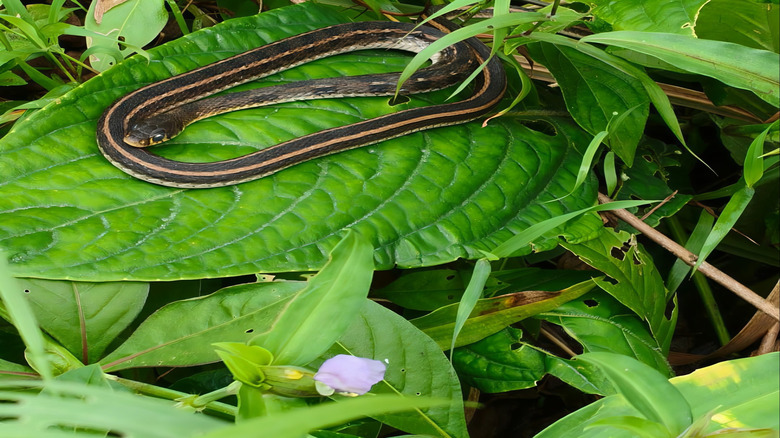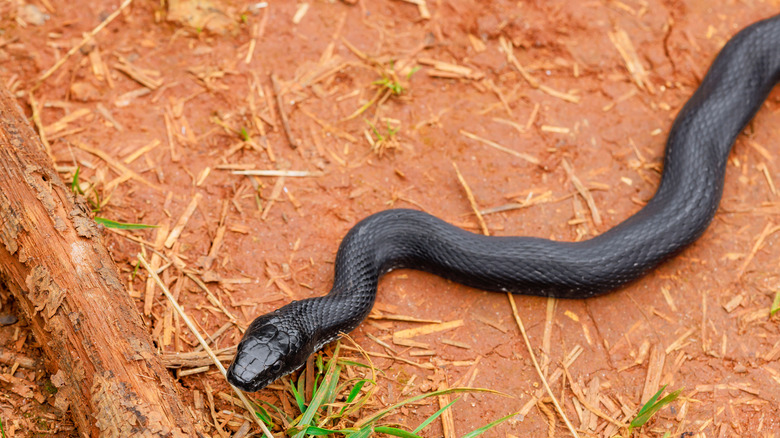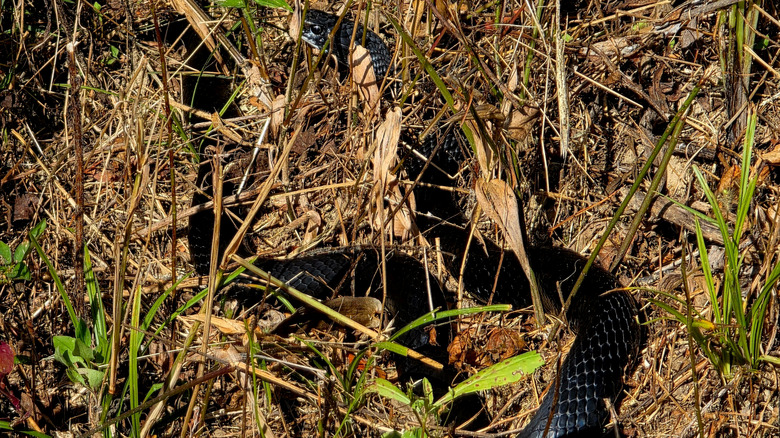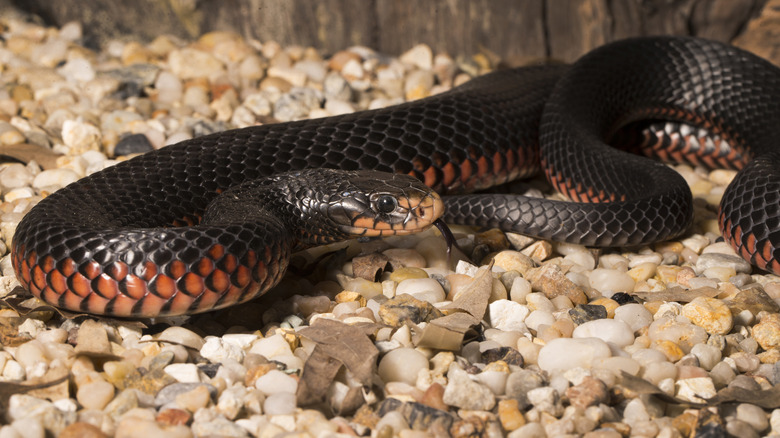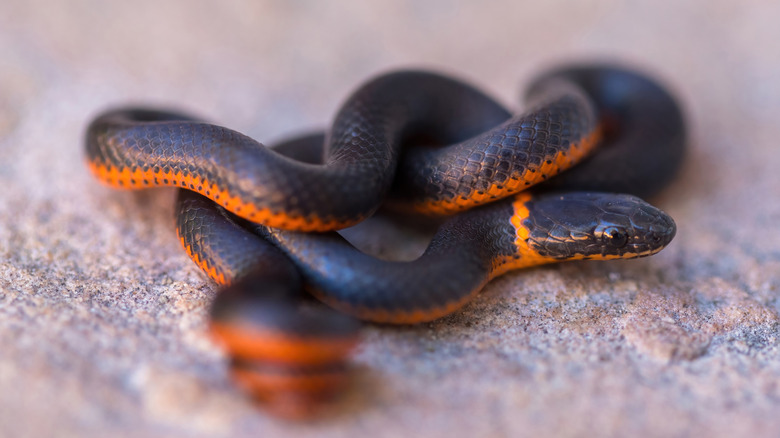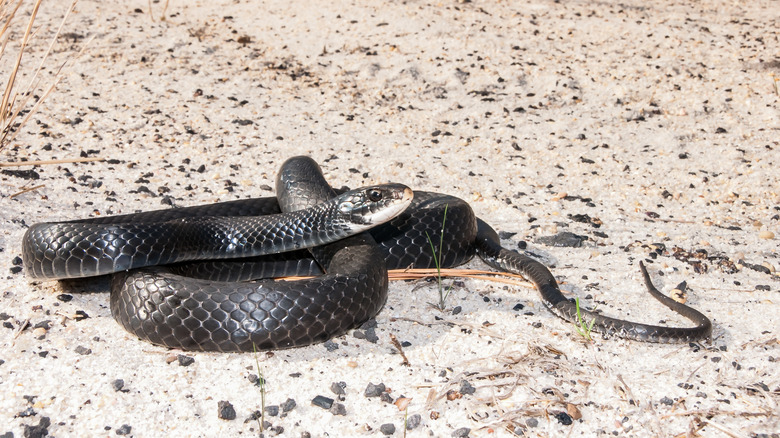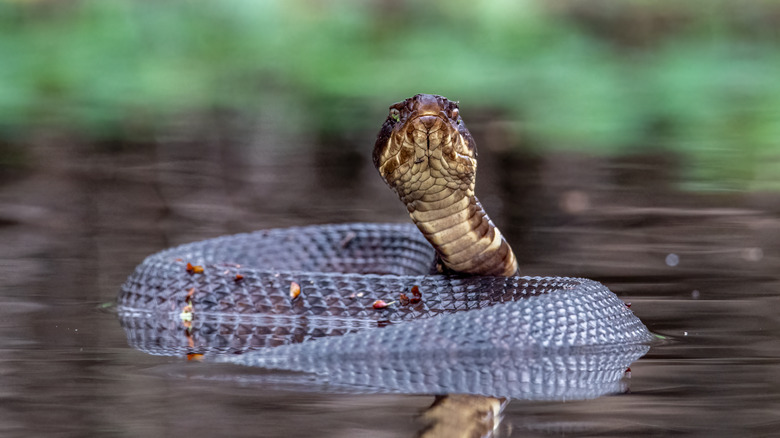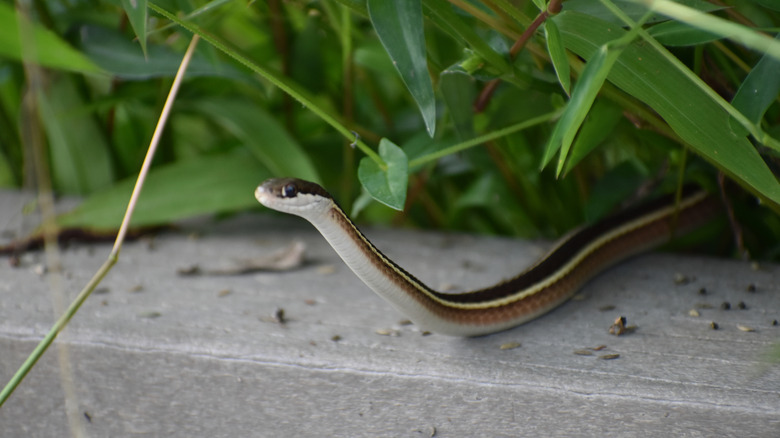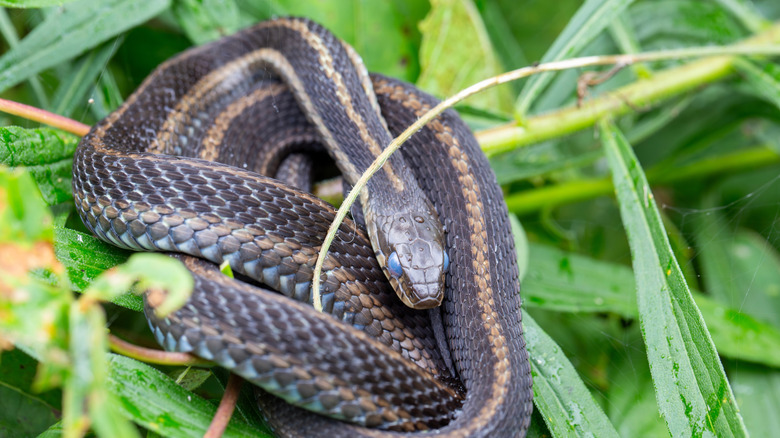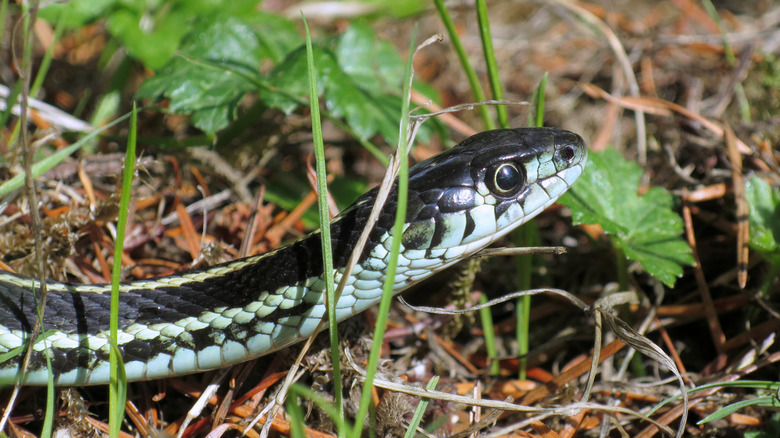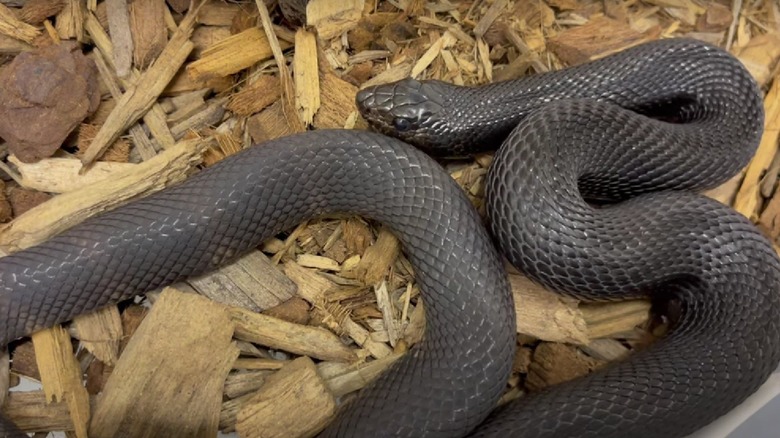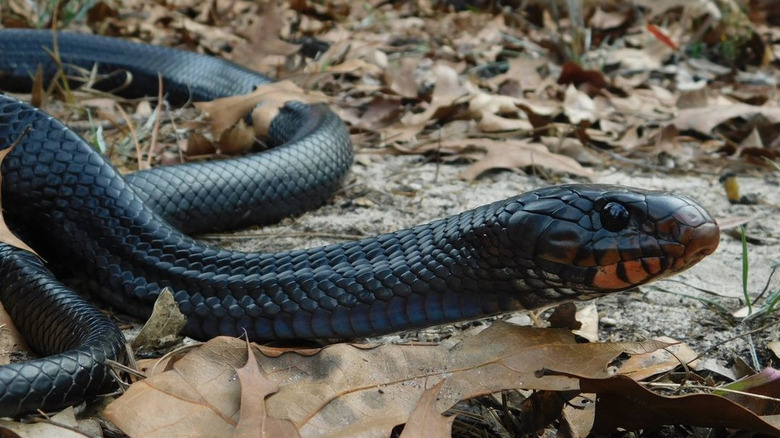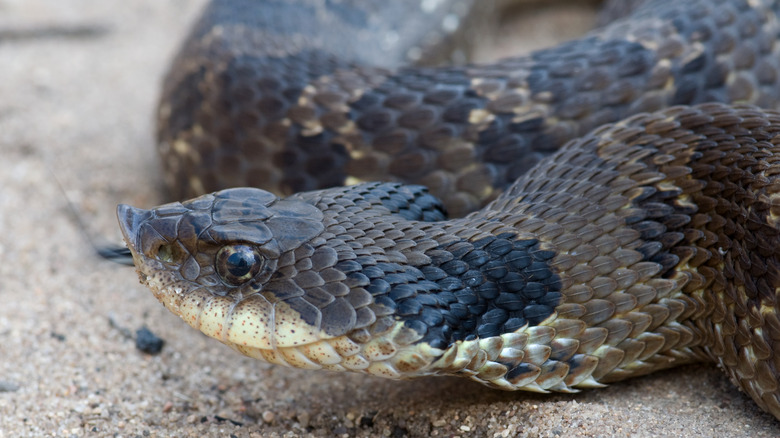12 Black Snake Species That May Be Lurking In Your Garden (& Why The Difference Matters)
Snakes have a bad reputation for being venomous, fearsome creatures. However, snakes can actually be a positive sign that your garden supports a healthy, balanced ecosystem. For snakes, gardens are an oasis, teeming with life. Dense foliage, stone elements, and moist soil provide shelter, water, and a place to bask in the sun. Non-venomous snakes, such as the black rat snake, provide free pest control for common garden inhabitants, including insects, rodents, and smaller reptiles. Of course, some snakes, such as water moccasins, are indeed dangerous to humans and pets. When provoked, a venomous snake bite can cause discomfort at best and a trip to the hospital at worst.
Black snakes are among the most common snakes slithering into your home and garden. While their black scales make them difficult to discern, there are several different species to know to keep you and your family safe. Knowing how to accurately identify common black snakes matters because it helps you understand their behavior and temperament, as well as determine if they're venomous. That way, you can determine which ones are welcome guests and which ones need to be removed.
Eastern rat snake
Eastern rat snakes, formerly known as black rat snakes, can be identified by their matte black scales and white or yellow belly. Adults typically grow to be between 3 and 7 feet long. They are non-venomous constrictors, meaning they kill their prey by coiling tightly around them. These snakes are quite agile, with the ability to climb and swim. Aptly named, black rat snakes are known for their predation on rodents. Rest assured, these snakes are harmless.
Black king snake
Black king snakes are characterized by their thick bodies, shiny black scales, and light-yellow markings. In adulthood, they grow up to 4 feet long. Think of these snakes as garden protectors. They're known to eat other snakes, including venomous ones. While they aren't venomous, they will still deliver a painful bite if they're handled or feel threatened. If you see one, it's best to leave it alone.
Black swamp snake
Black swamp snakes are typically found in the swamps of Florida and coastal Georgia. These small aquatic reptiles can be easily identified by their red bellies. If you see them in your backyard pond or natural water features, don't worry. Black swamp snakes are non-venomous and docile, unlikely to bite even when handled. Plus, they feed on insects, helping to keep your garden free of pests.
Ring-necked snake
Ring-necked snakes are easily spotted by the yellow or red ring around their necks, but you may only see one on rare occasions. These snakes are small, reclusive, and most active at night. They only reach about 10 to 15 inches in length, allowing them to coil up and hide under rocks and crevices in your garden. Ring-necked snakes are mildly venomous but harmless to humans.
North American black racer snake
The North American black racer is easily confused with the eastern rat snake, as it's similar in length and coloring. However, they have no underbelly color. Instead, they are solid black save for a white patch under their chins. North American black racer snakes flee rapidly when threatened, reaching speeds of up to 4 miles per hour. They're non-venomous, so don't worry if they pass through your garden.
Water moccasin
Water moccasins, also known as cottonmouth snakes, are venomous and should be avoided. Native to the Southeastern United States, water moccasins are solid black and stout. They have a triangular head with a narrow neck and vertical pupils. A bite from a water moccasin delivers hemotoxic venom, which disrupts blood clotting and damages tissues. If they become a problem in your garden, the best way to get rid of these snakes is to contact a professional for removal.
Eastern ribbon snake
A relative of the garter snake, the Eastern ribbon snake is named after the three white or yellow stripes running down its black body. They can be found along the swamps and streams of Eastern North America. If you have ponds or other wet areas in your garden, they might visit. These medium-sized snakes feed on amphibians and small fish, and are non-venomous and non-aggressive.
Common garter snake
Common garter snakes are frequent inhabitants of gardens. Just like eastern ribbon snakes, these snakes are adorned with yellow or white stripes; however, they tend to grow longer, at about 2 to 4 feet. They're active during the day, happily eating the earthworms, rodents, and other critters that may harm your garden. Most importantly, they're non-venomous and perfectly safe.
Puget Sound garter snake
Native to the moist, marshy Puget Sound region of Washington State, this garter snake subspecies' signature stripes are cool blue, yellow, or cream. They reach a length of 2 to 3 feet. The Puget Sound garter snake's bite is mildly venomous with the purpose of subduing its prey. It won't cause serious illness in humans, but it may cause allergic reactions. However, this snake also feeds on toxic salamanders, like newt salamanders, that you may find in your garden.
Black pine snake
Black pine snakes are non-venomous constrictors found in Mississippi and southwest Alabama. Unlike other pine snakes, black pine snakes are fully black or dark brown as opposed to being spotted. Black pine snakes are a threatened species due to the loss of their habitat, longleaf pine forests. They're known to hiss loudly at humans when they feel threatened, but they are harmless. If they make their way into your garden, it's best to leave them alone.
Eastern indigo snake
The eastern indigo snake is the longest native snake in North America, growing up to 9 feet long. Though their size is intimidating, these snakes are non-venomous and rarely bite humans. Instead, they prefer to spend their time nesting in gopher tortoise burrows. The eastern indigo snake is another species that is threatened by the loss of longleaf pine forests in the southeastern United States, specifically in Florida, Georgia, Alabama, and Mississippi. Just like the black pine snake, it's important not to harm these creatures.
Eastern hognose snake
The eastern hognose snake is characterized by its stout body, upturned nose, and brown and black blotchy pattern. Their bite delivers a mild venom meant to subdue prey. It may cause a mild allergic reaction, but bites from eastern hognose snakes are rare. Oftentimes, these snakes strike when people handle frogs and toads, their preferred food. Eastern hognose snakes are often found in developed areas that encroach on their natural woodland habitats.
